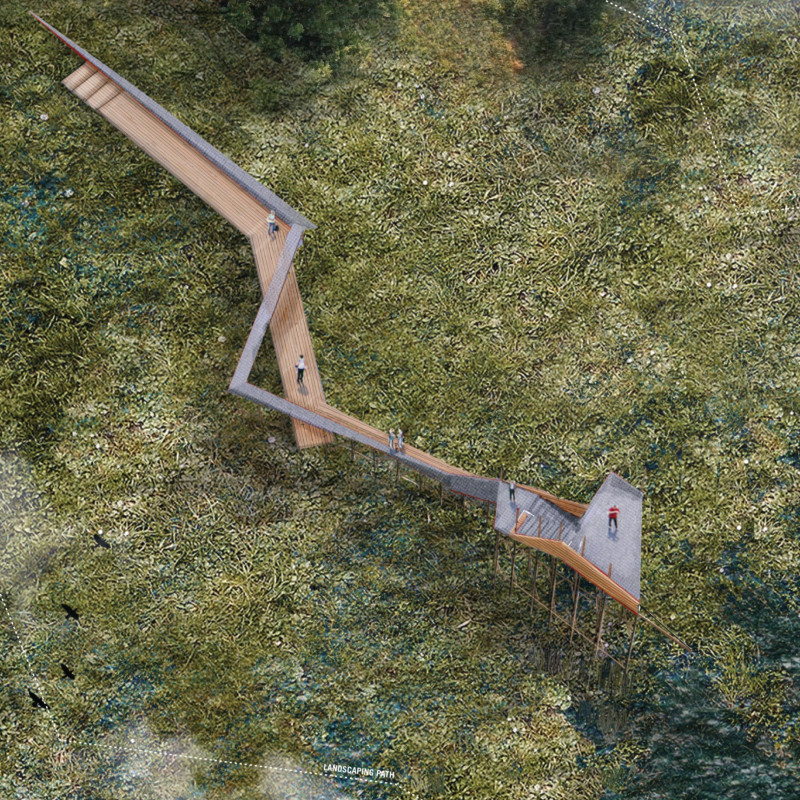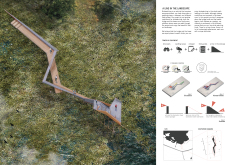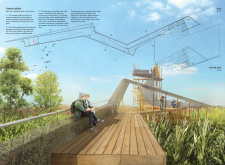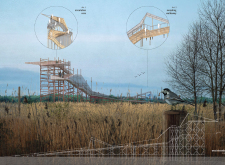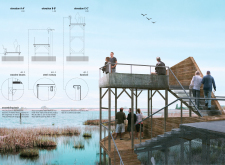5 key facts about this project
### Overview
Located within a natural landscape, the project, "A Line in the Landscape," is designed to serve as a dedicated observation platform for birdwatchers while fostering an appreciation for the surrounding environment. This structure enhances user engagement with nature through a carefully conceived architectural framework that promotes birdwatching as both a recreational and educational activity. The design integrates the path of the observation platform with the topography, ensuring that users experience the full visual and auditory richness of the natural setting.
### Spatial Organization and Functionality
The architectural composition consists of a bridge and an observation tower, interconnected by a winding platform that adapts to the contours of the land. The design emphasizes three main functions: standing, viewing, and movement. Designated standing areas allow users to pause and observe comfortably, while elevated viewing platforms provide expansive sightlines of the landscape. The ramped pathways ensure accessibility, accommodating users of various mobility levels and promoting a fluid experience throughout the structure. The form reflects intricate patterns found within natural ecosystems, enhancing the user's connection to the environment.
### Material Selection and Environmental Integration
Materiality plays a crucial role in the project’s effectiveness and aesthetic appeal. Treated wood is predominantly used for walking surfaces and structural elements, fostering a warm, tactile experience that aligns with the surrounding nature. Steel mesh is utilized for railings and wind barriers, offering safety while maintaining unobstructed views; its industrial character contrasts with the warmth of the wood. Supported by a robust steel framework, the structure maintains stability in an exposed setting. The design encourages ecological responsiveness by promoting the growth of native flora around the walkways, which attracts various bird species and contributes to biodiversity. User-centric features, such as the provision of birdwatching equipment, further enhance the interactive experience, ensuring that the structure meets both functional and experiential needs.


